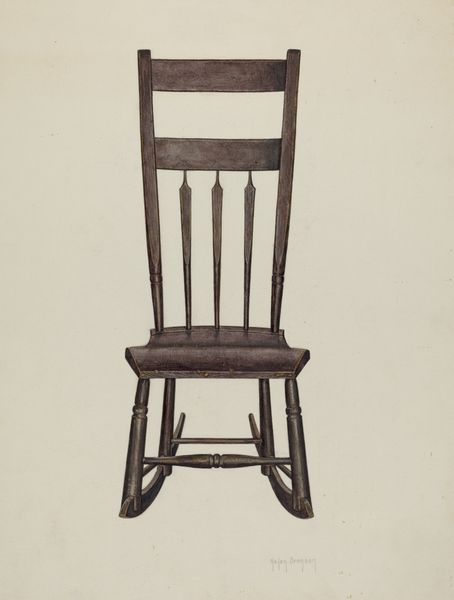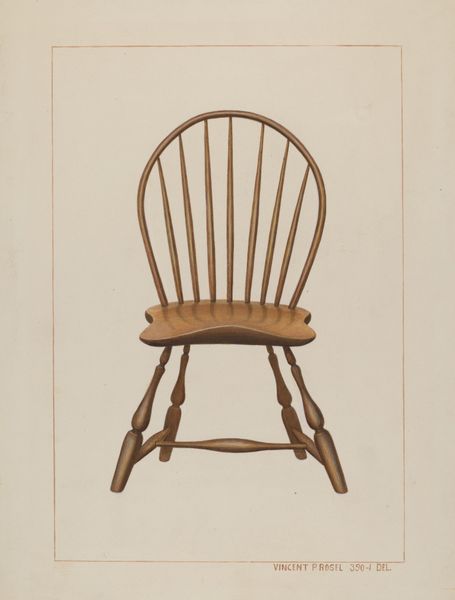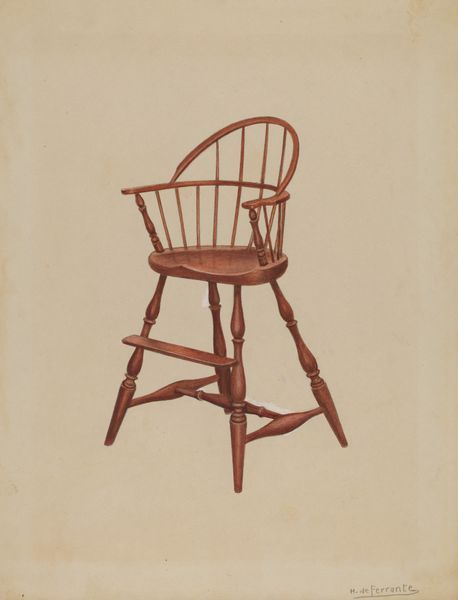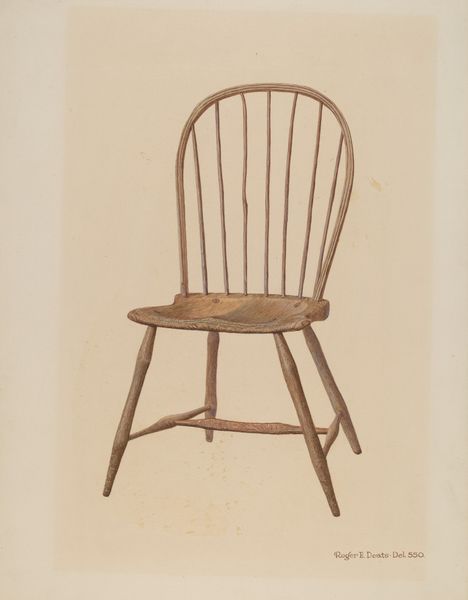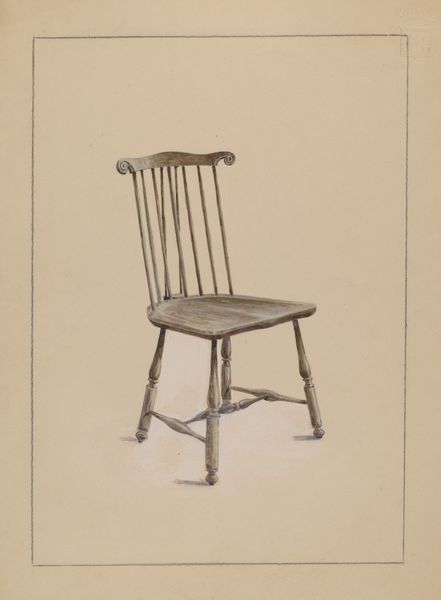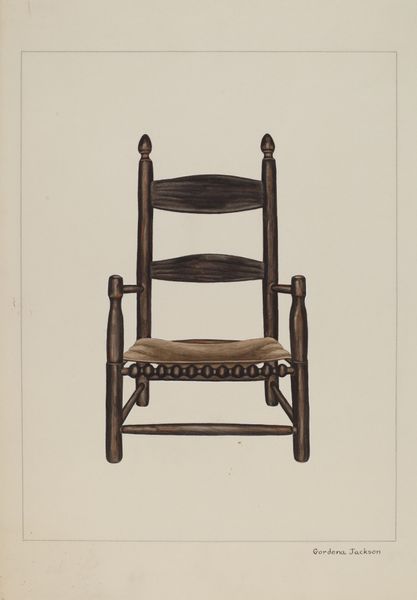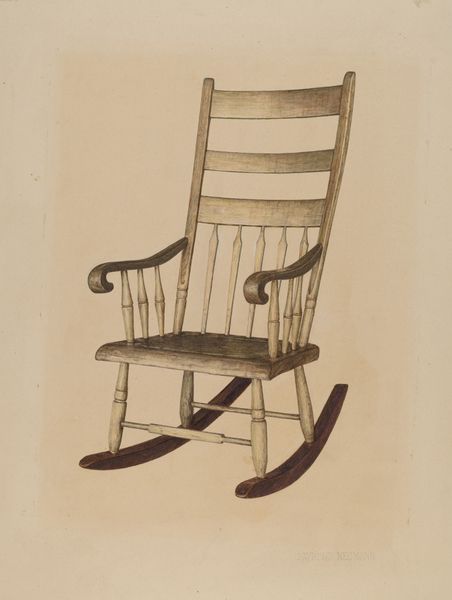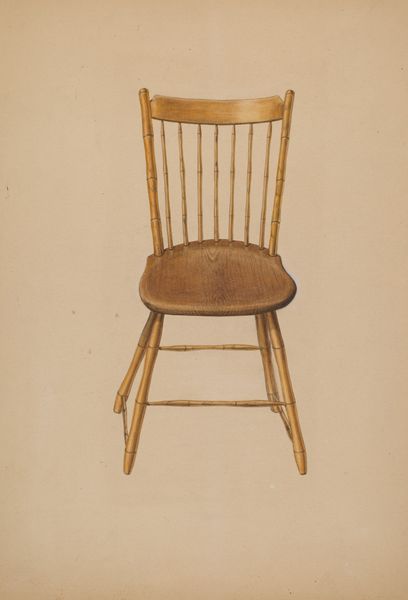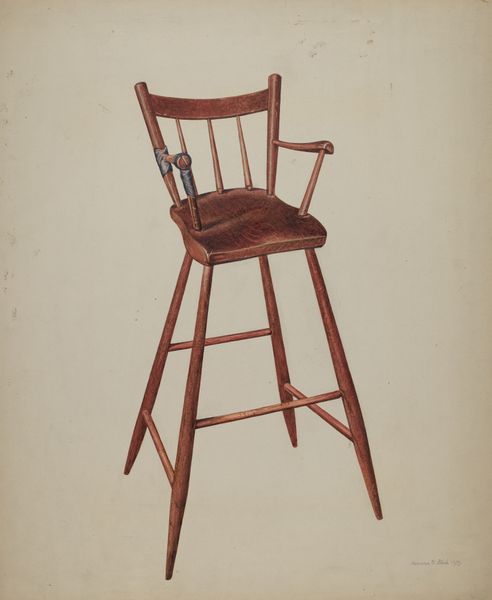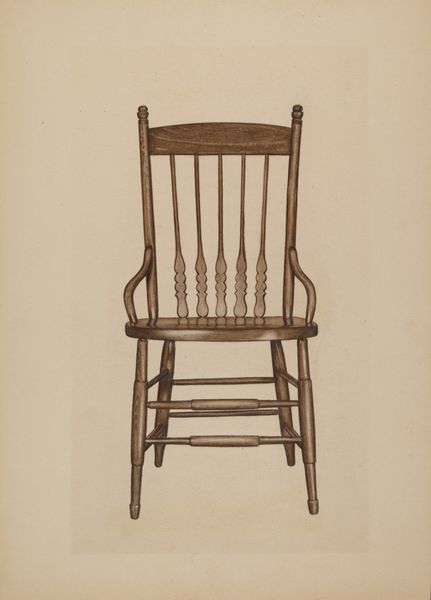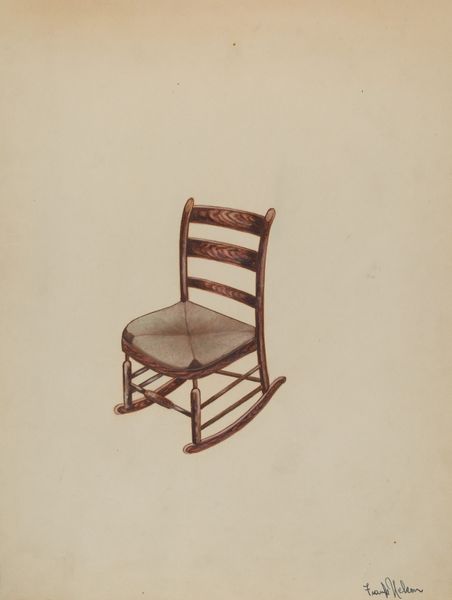
drawing, pencil
#
drawing
#
pencil drawing
#
pencil
#
academic-art
#
modernism
#
realism
Dimensions: overall: 33.3 x 24.6 cm (13 1/8 x 9 11/16 in.) Original IAD Object: About 33" high and 26"wide
Copyright: National Gallery of Art: CC0 1.0
Curator: This detailed pencil drawing from Clyde L. Cheney, titled "Armchair," created sometime between 1935 and 1942, offers a fascinating subject. Editor: It’s surprisingly elegant. There’s a kind of stately repose conveyed through the composition. The lines are clean, but there's still a palpable sense of texture and form, wouldn’t you agree? Curator: Indeed. Cheney meticulously renders this seemingly everyday object, an armchair, giving it a modernist twist with an almost clinical approach. Think about the social context—was he examining the idealization of domesticity during that period? Was there a focus on standardization and mass production bleeding into artistic practice? Editor: Perhaps, but look closer. The light falls precisely, shaping the back and seat. There is symmetry with variations – that slight tilt of the back. This all gives depth. I also think it transcends the mere depiction of an object and verges on portraiture, capturing a presence almost beyond its physicality. Curator: Agreed, however I wonder what Cheney was considering during that period. Mass production? Did the artist think the process of this particular chair gave a view into labor of the working man or woman, not only from an artist point of view? Editor: But see how those linear elements play off the curves? The pencil, of course, is key. Curator: The artist is obviously capable and has great command over his materials. A critical reading of this piece might suggest that while celebrating craft, it paradoxically hints at the alienating effects of the mechanized age and its production processes. Editor: Still, look at the form! Even just its visual simplicity, stripped of distraction, lets us confront our understanding of something as essential as sitting. What does it mean? And how is this chair designed so you would use it, visually? Curator: So we can see "Armchair," not just as an exercise in form, but also a prompt to explore social realities that molded its production. Editor: Absolutely! It becomes an engaging lesson in artistic discipline, an almost philosophical quest through form and space, wouldn't you say?
Comments
No comments
Be the first to comment and join the conversation on the ultimate creative platform.
